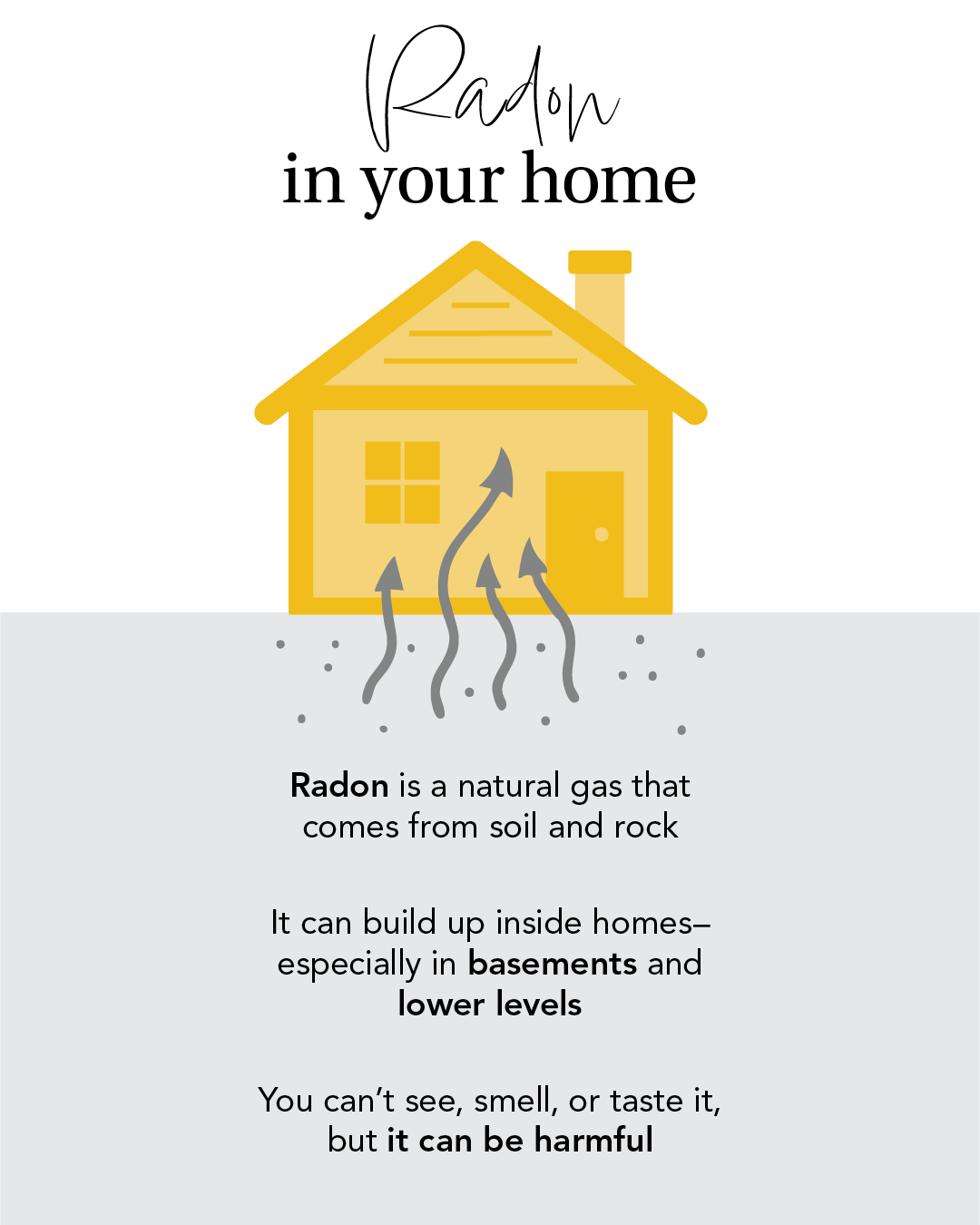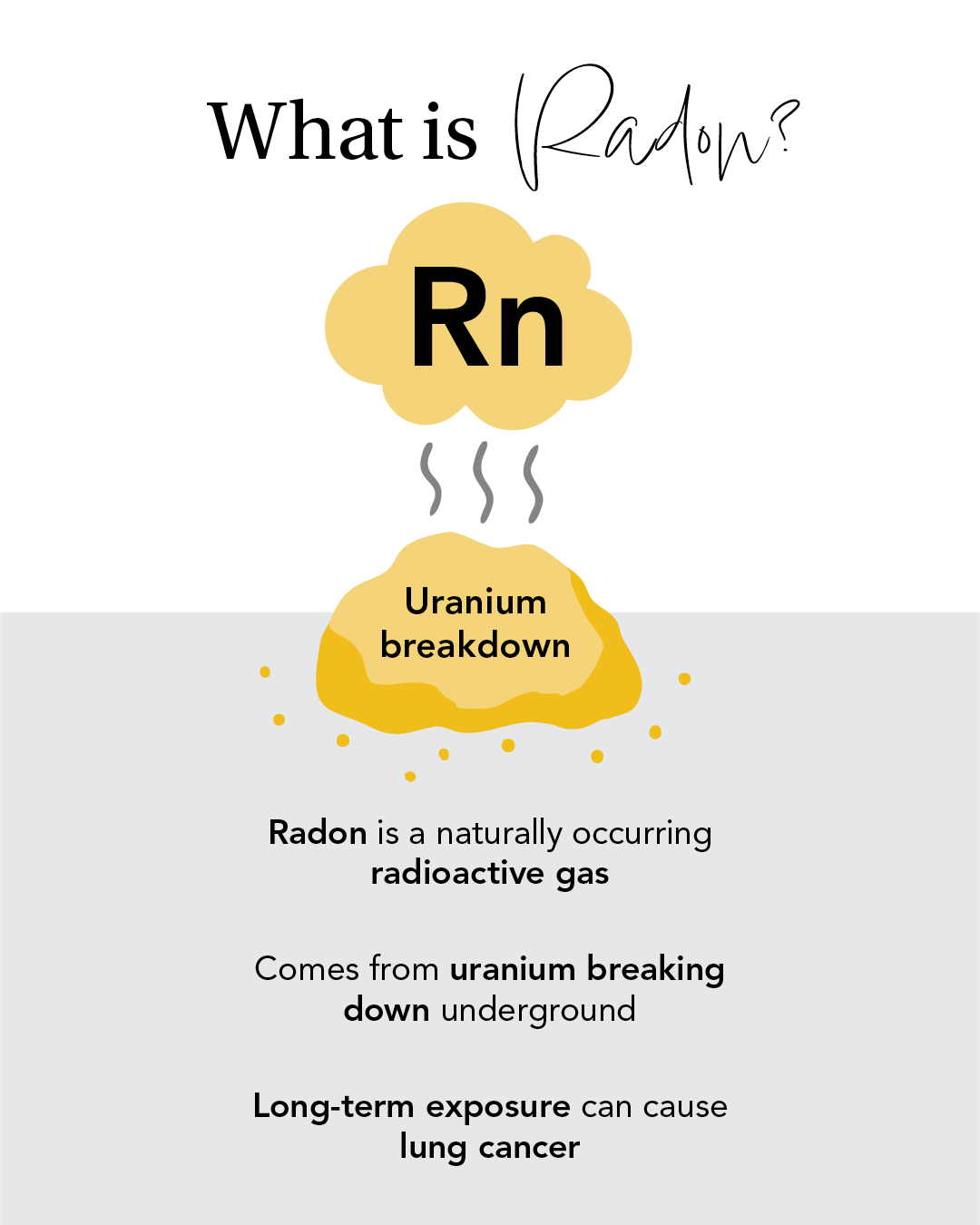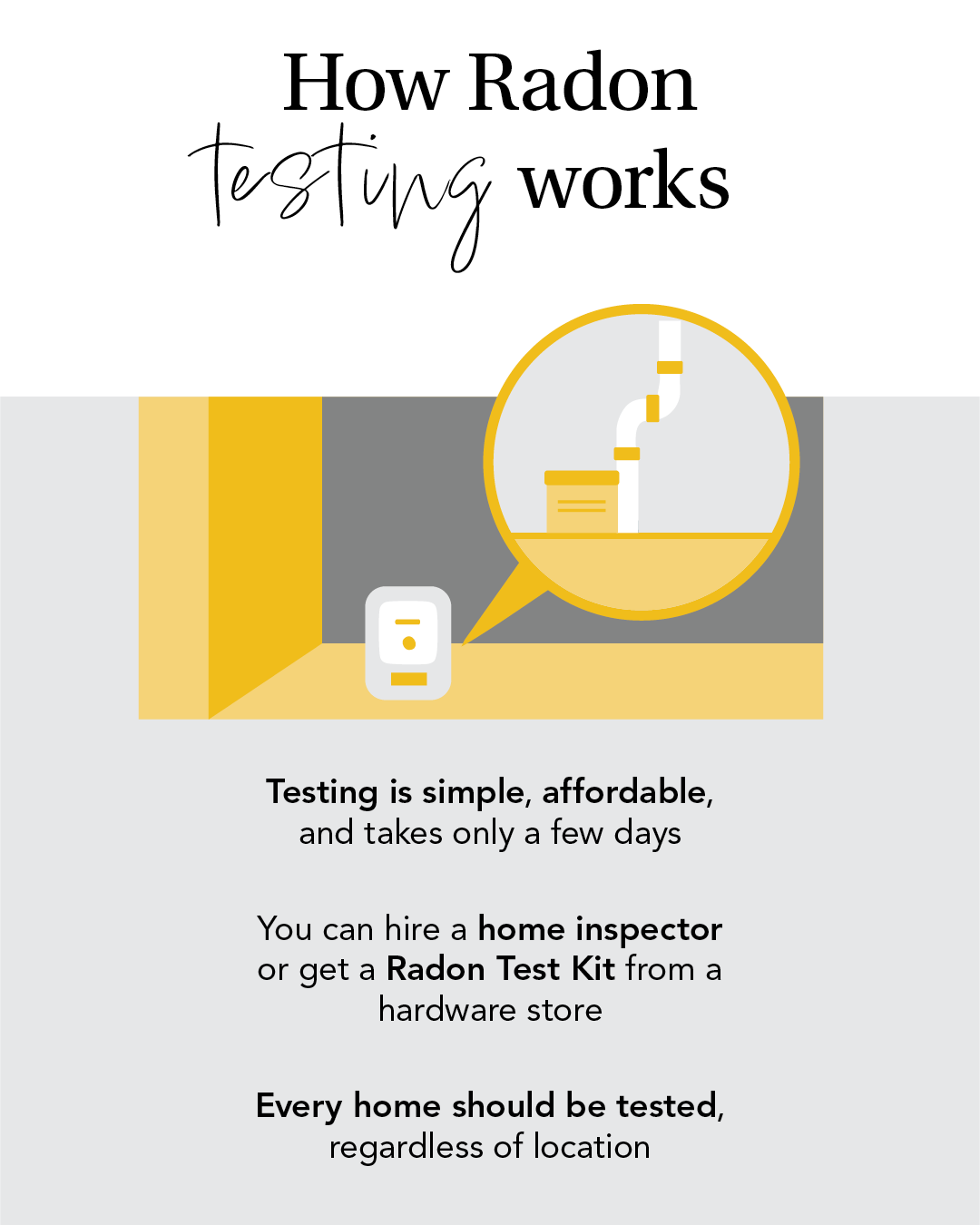Radon is a naturally occurring radioactive gas that comes from the breakdown of uranium in soil, rock, and water. It’s colorless, odorless, and tasteless, making it impossible to detect without proper testing. While it’s present in outdoor air at low levels, radon can accumulate to unsafe concentrations inside homes, particularly in lower levels like basements and crawl spaces.



Why is radon a concern?
Long-term exposure to elevated radon levels is the second leading cause of lung cancer in
the United States, according to the Environmental Protection Agency (EPA). The risk is higher for smokers, but non-smokers can also be affected.
The only way to know if your home has elevated radon levels is through testing.
Radon tests are simple, affordable, and can be completed in a few days. Many home inspectors offer radon testing as part of a pre-sale inspection, and do-it-yourself kits are available at hardware stores. The EPA recommends testing every home, regardless of location, since radon can be a problem in any area.
If your home’s radon levels are above the EPA’s action level of 4 picocuries per liter (pCi/L), mitigation is straightforward.
A certified radon mitigation contractor can install a system—often involving a vent pipe and fan—that draws radon from beneath your home and releases it safely outside. These systems are effective and relatively inexpensive compared to the potential health risks.
Whether you’re buying, selling, or staying put, radon testing is an important step in protecting your family’s health. If you have questions about testing or mitigation Fazendin Realtors can get you connected with industry professionals. •
